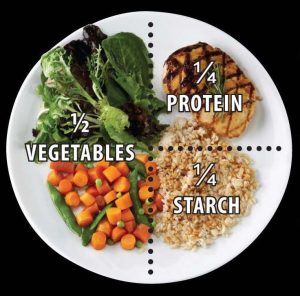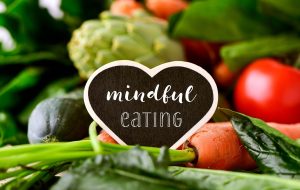Understanding the Essence of Balanced Nutrition In the fast-paced modern world, maintaining a balanced diet often feels like navigating through a labyrinth of conflicting information and fad diets. However, at the core of it all lies a simple concept: balanced nutrition. A balanced diet is the cornerstone of good health, providing the body with essential
Understanding the Essence of Balanced Nutrition
In the fast-paced modern world, maintaining a balanced diet often feels like navigating through a labyrinth of conflicting information and fad diets. However, at the core of it all lies a simple concept: balanced nutrition. A balanced diet is the cornerstone of good health, providing the body with essential nutrients to function optimally. In this comprehensive guide, we’ll delve into the secrets of balanced nutrition and provide you with a practical roadmap to Building a Healthy Plate Explore More About Health Issues and Their Solutions (How To Improve You Health in 30 Days)
The Fundamentals of Balanced Nutrition
What Constitutes a Balanced Diet?
A balanced diet to Building a Healthy Plate and comprises a variety of foods in appropriate proportions, ensuring the body receives the nutrients it needs to thrive. This includes:
- Macronutrients: Carbohydrates, proteins, and fats form the foundation of a balanced diet, providing energy and supporting various bodily functions.
- Micronutrients: Essential vitamins and minerals play crucial roles in metabolism, immunity, and overall health.
- Fiber: Found in fruits, vegetables, and whole grains, fiber aids digestion and promotes satiety.
The Importance of Portion Control
While the quality of food is paramount, so is portion control. Consuming appropriate portion sizes helps prevent overeating and ensures a balanced intake of nutrients. Portion control is key to maintaining a healthy weight and preventing chronic diseases such as obesity and diabetes.

Image by: yendex.com
Building a Healthy Plate: Practical Guidelines
The Plate Method
The Plate Method offers a simple yet effective approach to Building a Healthy Plate. Divide your plate into sections and fill each with the following:
- Half Your Plate with Vegetables: 🥦 Load up on colorful vegetables, such as leafy greens, bell peppers, and carrots, to boost your intake of vitamins, minerals, and antioxidants.
- One-Quarter with Lean Proteins: Choose lean sources of protein, such as chicken breast, fish, tofu, or legumes, to support muscle growth and repair.
- One-Quarter with Whole Grains or Starchy Vegetables: Opt for whole grains like quinoa, brown rice, or whole-wheat pasta, or starchy vegetables like sweet potatoes or corn, to provide sustained energy and fiber.
Incorporating Healthy Fats
Don’t shy away from fats; just ensure they’re the healthy kind. Include sources of healthy fats such as avocados, nuts, seeds, and olive oil in your diet. These fats are essential for brain health, hormone production, and absorption of fat-soluble vitamins.
Avoid Sugary Drinks
When it comes to beverages, steer clear of sugary drinks like soda and fruit juices. These beverages are high in added sugars and provide little to no nutritional value. Instead, opt for water, herbal tea, or infused water for a refreshing and hydrating choice.
Food for Thought: Whole Grain Goodness
Make whole grains a staple in your diet for added fiber, vitamins, and minerals. Whole grains such as oats, quinoa, and barley are rich in nutrients and can help lower the risk of heart disease, diabetes, and certain cancers.

Image by: yendex.com
Get Cooking: Embrace Homemade Meals
Cooking meals at home allows you to control the ingredients and portion sizes, making it easier to eat healthily. Experiment with new recipes and cooking techniques to discover delicious and nutritious meals that satisfy your taste buds and nourish your body.
Plan Your Meals for Success
Meal planning is a game-changer when it comes to maintaining a balanced diet. Set aside time each week to plan your meals, create a shopping list, and prepare ingredients in advance. This not only saves time and money but also ensures you have nutritious options readily available when hunger strikes.
Choose Powerful Vegetables
Certain vegetables pack a powerful nutritional punch and should be incorporated into your diet regularly. 🥕 Focus on nutrient-dense options like kale, spinach, broccoli, and sweet potatoes to maximize your intake of vitamins, minerals, and antioxidants.
Navigating Dietary Challenges: Tips for Success
Practice mindful eating by paying attention to hunger cues and savoring each bite. Avoid distractions such as television or smartphones during meals to fully enjoy your food and prevent overeating.
Flexibility and Moderation
While it’s essential to prioritize nutritious foods, allow yourself flexibility and moderation and Building a Healthy Plate. It’s okay to indulge in occasional treats or dine out with friends and family. Balance is key to long-term dietary success.
Mindful Eating Habits: A Guide to Nourishing Your Body and Soul
🌟 Engage Your Senses
One key aspect of mindful eating habits is engaging all your senses during meals. Take a moment to appreciate the colors, textures, and aromas of your food before taking a bite. This heightened awareness enhances the eating experience and fosters a greater appreciation for the nourishment your food provides.
⏳ Slow Down
In our fast-paced society, we often rush through meals without fully enjoying or even tasting our food. Mindful eating encourages you to slow down and savor each mouthful, chewing slowly and thoroughly. This allows your body to properly digest food and signals to your brain when you’re full, preventing overeating.
🙏 Practice Gratitude
Cultivate an attitude of gratitude towards your food and the effort that went into preparing it. Take a moment to reflect on the journey your food took from farm to table, acknowledging the hard work of farmers, producers, and chefs. This sense of gratitude enhances the eating experience and fosters a deeper connection with your food.
🍽️ Listen to Your Body
Tune into your body’s hunger and fullness cues to guide your eating habits. Eat when you’re hungry and stop when you’re satisfied, rather than mindlessly consuming food out of habit or boredom. This mindful approach to eating helps you maintain a healthy relationship with food and prevents unnecessary overeating.
🚫 Eliminate Distractions
Minimize distractions during meals by turning off electronic devices, avoiding eating in front of the TV or computer, and creating a peaceful dining environment. By focusing solely on the act of eating, you can fully immerse yourself in the experience and appreciate the flavors and textures of your food and Building a Healthy Plate.
🌱 Practice Non-Judgment
Let go of judgment and criticism surrounding food choices and eating habits. Instead of labeling foods as “good” or “bad,” approach eating with curiosity and openness. Embrace a non-judgmental attitude towards yourself and your food choices, allowing for greater flexibility and self-compassion.
Incorporating mindful eating habits into your daily routine can transform your relationship with food and lead to greater satisfaction, enjoyment, and overall well-being. By being fully present and attentive during meals, you can nourish your body and soul in a profound and meaningful way.
Remember, mindful eating habits is not a diet or a set of strict rules, but rather a holistic approach to nourishment that celebrates the joy of eating and promotes balance and harmony in all aspects of life.
Embrace the practice of mindful eating habits and savor the richness of each moment as you nourish your body and soul with intention and awareness.

Image by: yendex.com
| Criteria | Sugary Drinks | Whole Grains |
|---|---|---|
| Nutritional Value | High in added sugars, low in nutrients | Rich in fiber, vitamins, and minerals |
| Impact on Health | Linked to obesity, type 2 diabetes, and heart disease | Associated with reduced risk of heart disease and diabetes |
| Satiety Factor | Low satiety, leading to increased calorie consumption | High satiety, promoting feelings of fullness and satisfaction |
| Glycemic Impact | Causes rapid spikes in blood sugar levels | Helps regulate blood sugar levels and prevent spikes |
| Long-Term Effects | Contributes to chronic diseases and weight gain | Supports digestive health, weight management, and longevity |
Empowering You to Build a Healthy Plate
In conclusion, unlocking the secrets of balanced nutrition is within reach for anyone committed to prioritizing their health. By following practical guidelines such as the Plate Method, incorporating healthy fats, staying hydrated, and embracing mindful eating, you can build a foundation of wellness that supports your overall well-being. Remember, small changes add up over time, so start today and embark on your journey to a healthier, happier you.
Unlock the secrets of balanced nutrition and embark on a journey to optimal health. With the right knowledge and tools, you can build a plate that nourishes your body and fuels your life.
FAQS
- What is balanced nutrition, and why is it important?
- Balanced nutrition refers to consuming a variety of foods in appropriate proportions to ensure the body receives essential nutrients for optimal health. It’s crucial because it supports bodily functions, helps maintain a healthy weight, and reduces the risk of chronic diseases.
- What are macronutrients, and why do we need them?
- Macronutrients, including carbohydrates, proteins, and fats, provide the body with energy and support various physiological processes. Carbohydrates are the body’s primary energy source, proteins are essential for tissue repair and growth, and fats play a role in hormone production and nutrient absorption.
- How can portion control contribute to a balanced diet?
- Portion control helps prevent overeating and ensures a balanced intake of nutrients. By consuming appropriate portion sizes, individuals can maintain a healthy weight, regulate blood sugar levels, and reduce the risk of chronic diseases such as obesity and diabetes.
- What is the Plate Method, and how does it work?
- The Plate Method is a simple approach to building a balanced meal by dividing the plate into sections for vegetables, lean proteins, and whole grains or starchy vegetables. It helps individuals visualize portion sizes and ensures they include a variety of nutrient-rich foods in their diet.
- Why should we incorporate healthy fats into our diet?
- Healthy fats, such as those found in avocados, nuts, seeds, and olive oil, are essential for brain health, hormone production, and the absorption of fat-soluble vitamins. Including healthy fats in the diet can help improve cholesterol levels and reduce the risk of heart disease.
- What are some tips for avoiding sugary drinks?
- To avoid sugary drinks, individuals can opt for water, herbal tea, or infused water instead. Cutting back on sugary beverages can reduce calorie intake, improve hydration, and lower the risk of dental cavities and weight gain.
- Why are whole grains recommended for a balanced diet?
- Whole grains, such as oats, quinoa, and barley, are rich in fiber, vitamins, and minerals. They can help improve digestion, regulate blood sugar levels, and reduce the risk of heart disease, diabetes, and certain cancers.
- How can meal planning and preparation contribute to healthier eating habits?
- Meal planning allows individuals to choose nutritious recipes, create a shopping list, and prepare ingredients in advance. This can save time and money, reduce food waste, and ensure that healthy options are readily available for meals and snacks.
- What are some powerful vegetables to include in the diet?
- Nutrient-dense vegetables like kale, spinach, broccoli, and sweet potatoes are packed with vitamins, minerals, and antioxidants. Incorporating these vegetables into meals can boost overall nutrient intake and support optimal health.
- How can mindful eating help improve dietary habits?
- Mindful eating involves paying attention to hunger cues, savoring each bite, and avoiding distractions during meals. By practicing mindful eating, individuals can develop a healthier relationship with food, prevent overeating, and fully enjoy the dining experience.




















